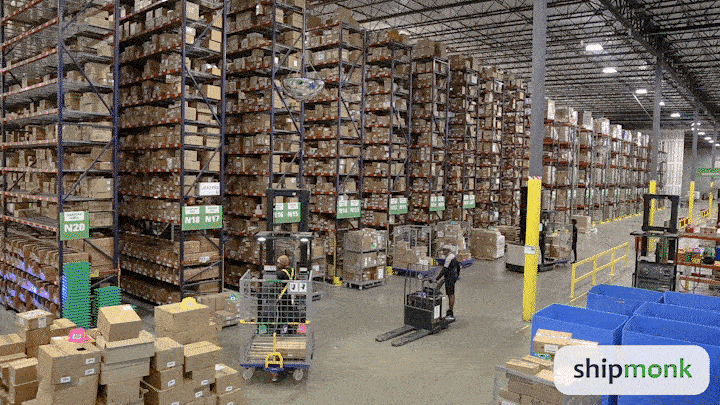How much does each enrollment cost you… and how much do you lose when a student leaves? AI can plug that financial hole before the next cycle.
Why retention is the new critical KPI in private education 🏫 → 💰
Quick question: how much did you invest this year to attract each new enrollment?
Now imagine that 30% of those students drop out before the second semester. That 'black hole' in your balance sheet is called academic churn.

In a market where demand is cooling and competition is skyrocketing, keeping students is cheaper than acquiring them. Every percentage point in retention can represent tens (or even hundreds) of thousands of dollars in future revenue and referrals.
That’s why top institutions now track retention rates with the same obsession a SaaS company tracks MRR.
The good news: today, artificial intelligence provides 24/7 eyes and ears to detect risk signals and trigger actions before a student slips out the back door.
X-ray of dropout rates in Latin America (2024–2025 data)
- 50% of Latin American students drop out of higher education before graduating in several countries across the region.
- In Colombia, annual dropout fell to 8% in 2022, but that figure doubles in the first two years—precisely when financial strain hits hardest.
- Consulting firm uPlanner notes that, in response to the drop in 2025 enrollments, universities must adopt “personalized strategies to attract and retain students” based on technology.
Translating that into real numbers
Let’s take a private university with 4,000 students and an average annual tuition of USD 4,000:
| Scenario | Retention | Projected Revenue (4 years) |
|---|---|---|
| Current | 70 % | USD 11,2 M |
| +5 pp | 75 % | USD 12 M |
| +10 pp | 80 % | USD 12,8 M |
That extra USD 1.6 M is equivalent to opening an entirely new campus… without building a single structure.
How predictive analytics identifies at-risk students 🚦

This is where AI steps in as an 'academic sentinel':
-
Signal collection
- Participation in virtual classes and forums
-
Grade variation per unit
-
Attendance and punctuality history
-
Interactions on the LMS and connection time
-
Predictive modeling
Supervised algorithms (boosted trees, neural networks) assign each student a daily risk score.
-
Multichannel alerts
The system sends notifications to the tutor, coach, or Darwin's 'AI-employee' via CRM, email, or WhatsApp to trigger a support plan.
Fun fact: well-trained models reach >85% accuracy in predicting dropout in the first semester, according to internal studies by leading edtechs.
Mini case study: 3 variables that trigger an early alert
| Variable | Critical Threshold | Suggested Action |
|---|---|---|
| Late login to the platform (> 3 days without logging in) | 3 days | Chatbot sends reminder + diagnostic micro-quiz |
| Grade drop > 15% between two assessments | 15 % | Tutor offers personalized review session |
| 2 consecutive absences in hybrid class | 2 absences | Advisor calls / schedules virtual meeting |
With a pipeline like this, your staff doesn't waste hours combing through spreadsheets: they tackle the red-flag cases first while AI automates the 'yellow' alerts.
Academic chatbots and 'AI-employees': 24/7 tutoring without overloading the team

Imagine an assistant who never waits in line for coffee and always replies patiently at 3 a.m. When you integrate an academic chatbot with your LMS and CRM, that’s exactly what you get:
- Instant assistance: Answers FAQs about enrollment, scholarships, and the academic calendar.
- Personalized support: Recommends resources based on individual performance—avoiding the usual 'just study more' advice.
- Human escalation: When a question is complex, the bot escalates the case and logs it in the CRM.
Studies across LATAM highlight that 24/7 availability reduces the feeling of abandonment and strengthens student loyalty through technology.
Retention strategies with technology: nudges, reminders, and surveys
Once an at-risk student is identified, the next step is to keep them from disappearing. A combo of AI + automation can trigger:
- Behavioral nudges
- Push notifications as “micro-reminders” before deadlines.
- Automated congratulations for progress (because we all need a confetti emoji now and then).
- Multichannel reminders
- WhatsApp or SMS sequences mixing study tips and direct links to the virtual campus.
- Pulse surveys
- Bots that launch micro-surveys after each module and adjust the learning path based on feedback.
A study by the IDB (University of Buenos Aires, 2024) showed that simple personalized email campaigns reduced dropout in first-year courses by 8%. If emails can do that, imagine what truly conversational AI can achieve.
5-step implementation plan
Pro tip: Print this list and stick it next to your enrollment KPI. Each item checked off = fewer lost enrollments.
| Step | What to Do | Suggested Tool |
|---|---|---|
| 1 | Consolidate LMS, CRM, and attendance data | ETL connector + Darwin API |
| 2 | Train predictive model with ≥ 3 semesters of historical data | AutoML or edtech partner |
| 3 | Define alert thresholds and escalation protocols | Darwin “AlertFlow” panel |
| 4 | Deploy multichannel chatbot with tutoring flows | Academic AI-employee |
| 5 | Track indicators and refine quarterly | Retention dashboard |
Key Metrics and ROI of an AI-Based Retention Program
-
Retention rate by cohort
-
Additional revenue per retained student
-
LMS engagement (session time)
-
Post-intervention NPS satisfaction score
Recent studies report that well-calibrated predictive analytics models reach >85% accuracy in forecasting first-semester dropout. According to uPlanner, improving retention by just 5 percentage points can boost annual revenue by ~10%.
Common Barriers and How to Avoid Them
| Barrier | Antidote |
|---|---|
| Data silos between LMS and finance | Unified ETL + data governance |
| Faculty resistance | Pilot programs with quick wins and training |
| Alert overload | Adjust thresholds and prioritize high-risk cases |
| Fear of “cold” AI | Always keep the option for human contact |
Frequently Asked Questions
How expensive is it to implement AI for retention?
It depends on the size of your database and licenses, but it's usually less than 10% of the annual recruitment budget — and pays off within 1–2 semesters.
Do I need an in-house data scientist?
An edtech partner or AutoML platform handles the heavy lifting; your team provides academic expertise.
Will AI replace tutors?
No. It frees tutors from answering FAQs, giving them more time for high-impact mentoring.
Ready to stop the dropout leak?
Request your free demo of Darwin AI and turn every alert into a success story.
.png)






















